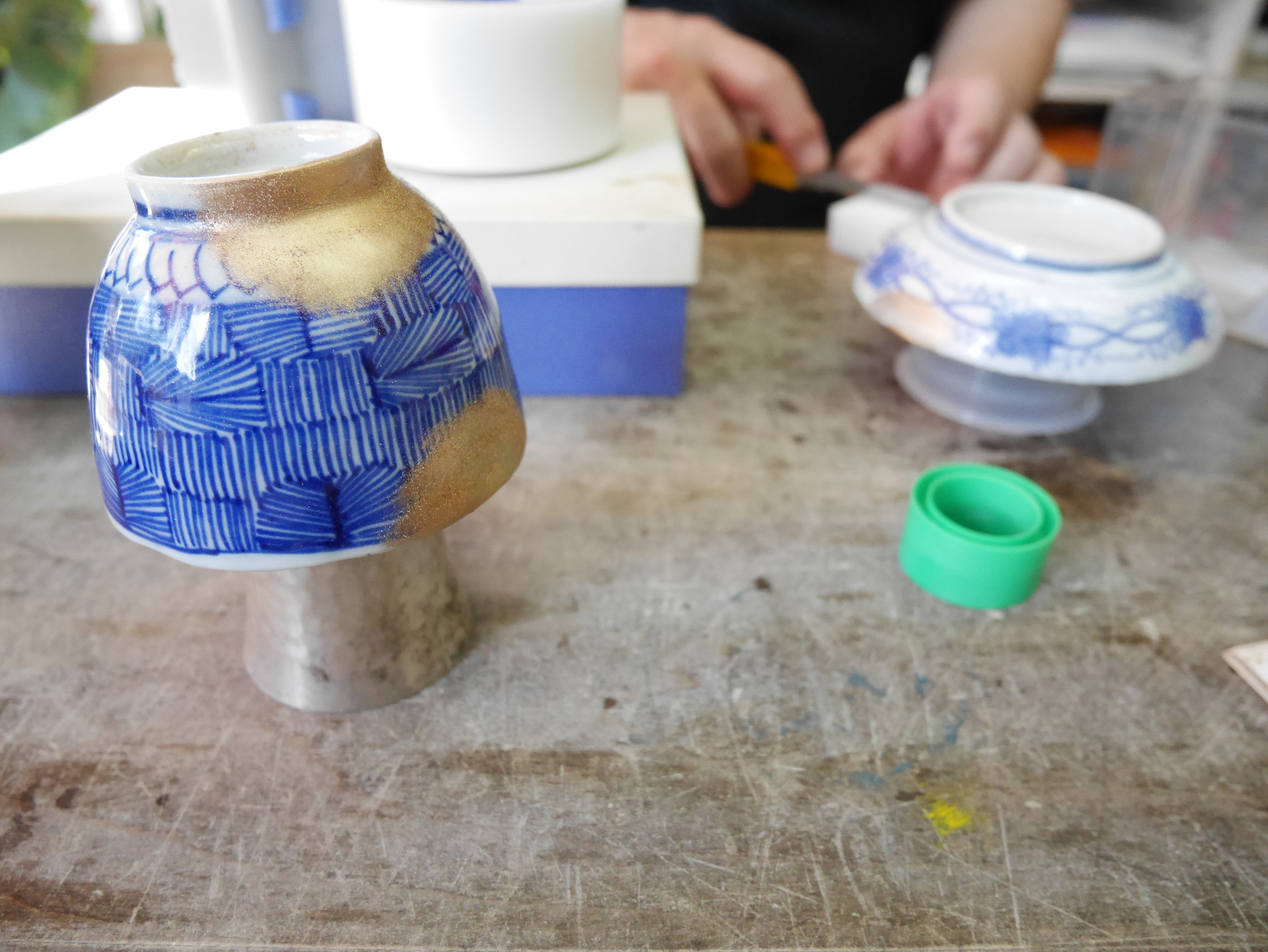Creative High-Five: Kintsugi
Kintsugi workshop at Kuge Craft studios, Tokyo
Two years ago, I stumbled across kintsugi while researching for things to do in Japan and became mildly obsessed with it. Kintsugi is the Japanese art of repairing broken pottery with lacquer dusted with powdered gold, but this practice is actually quite popular among other Asian cultures and dates back to the 15th century. Roughly translated as “golden joinery”, kintsugi not only repairs the broken piece but it highlights the seams and missing areas with gold. The idea behind it is really quite elegant: Embrace the imperfection.
In Western culture, when it comes to consumer products, “damaged goods” typically have a negative connotation. Broken objects are dismissed as second-rate and not as desirable as their whole counterparts because “missing a piece” is often viewed as weak, ineffective and even ugly. What I love about kintsugi is that the practice flips the “damaged goods” idea on its head and reinstates the missing piece as a sign of potential.
From a practical standpoint, kintsugi makes a lot of sense because it offers objects a chance at second-life. Chips, cracks and broken bits are mended with care and without judgement. I’ve adapted this outlook to my design practice and often find myself going back to it when I’m feeling stuck.
Painting on the gold
Chipped no more
Good for: Someone who is holding on to too many ideals or has trouble seeing past imperfection. Kintsugi is about letting go of what transpired and acting on the potential. Also good if you want to try your hand at a 15th century practice just to say you’ve done it.
Hard pass: Kintsugi as an idea and practice isn’t for everyone. It requires a shift in thinking and it can’t be done without being open to it. On a technical level, be warned that this practice is very hands-on so say goodbye to that nail polish.
Related: Kuntsugi: The Art of Broken Pieces
Creative High-Fives is a series discussing the things that unexpectedly spark inspiration for creativity, design thinking and productivity.



